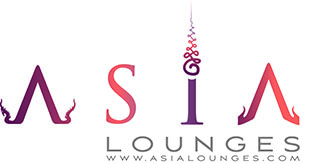Hey Loungers,
Today we have a rare opportunity for you. Today, we take you with us in the very heart of the heat treating industry of Chantaburie with none other than our pal Karim Guerchouche from Premacut.
Karim has been on the forefront of heat treatment for decades now and is one of the most knowledgeable experts around when it comes to the heat treatment of rubies.
Karim’s company is known to serve some of the major players of the Place Vendome in rubies, whether directly or indirectly and has a selection of gems treated and natural that are beyond spectacular.
Without any further delay we welcome Karim Guerchouche,
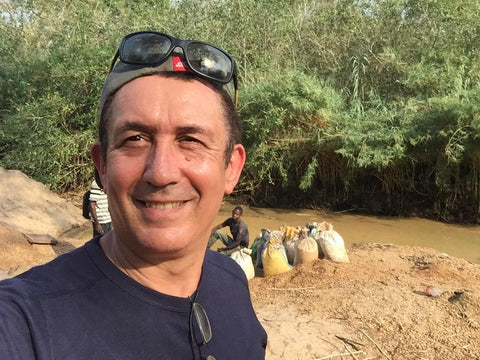
Field Gemology is no foreign affair to Karim Guerchouche from Premacuts - Photo Credits: Premacut Ltd
AsiaLounges: First of all, thank you Karim for agreeing to being with us today, we know it is not always easy to find a moment in your agenda for this kind of exercise. If you don’t mind, I’d like to start this interview as we always do, by asking you to introduce yourself to the Loungers. Who are you Karim Guerchouche?
Karim Guerchouche: I was born in Lyon, France. I come from a family of five children, my mother was French and my father Algerian.
After the Algerian independence in 1962, we all moved to Alger where I spent my childhood until 1977. I then decided to go back to France. In 1982, I began to travel to Asia and this is where my career began.
AsiaLounges: Before heading into the heat of the topic, pardon the pun, could you tell us how you first got involved with the gem trade. What brought you to it? Was it a family business, a personal passion or something else entirely?
Karim Guerchouche: No, it was not a family business at all.
On that note I’d like to give a big thank you to all the Indian friends I met along the way and that helped me contract the gem fever. Thanks to them, I learned the importance of travel and the importance of carrying the gem dream at my very core.
This industry is really just about that, understanding the dream that gems are and the travels that they require from us to find them, treat them and cut them!
The travels are what will eventually educate you on your path through the gem world or at least they helped me understand what gems were, where they come from and why they are so rare and precious. That is the very essence of the trade, that’s what makes it special and that’s why every self respecting gem dealer is a bit of a maverick and a dreamer. We all do stuff in our own rebellious way.

"The gem trade is all about travels and meeting people" Karim Guerchouche - Photo Credits: Premacut Ltd
AsiaLounges: When we first met you, some seven or eight years ago, you were still one of the most famous precision cutter, for watch quality that is, in Bangkok (This activity has been downgraded since in favour of the treatment facility). Can you tell us exactly what it is about and how it drove you to start experimenting with heat treatment?
Karim Guerchouche: Truth be told, I started experimenting with treatments before ever touching the precision cuts, you just didn’t know me then (chuckles).
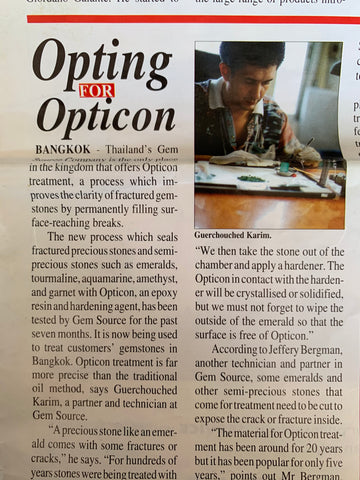
Karim Guerchouche on Opticon Treatments in Asian Jewellery Magazine February 1994 edition
In the 90’s I was involved with sapphire diffusion. We were using Titanium and Aluminium Oxide as components for the treatments. Titanium gives the blue colour to the gem while Aluminium Oxide is basically raw sapphire (Al2O3). Back then I was working in collaboration with Gem Source and its then owner, Jefferey Bergman. We were approached by Chatham company in order to diffuse synthetic sapphires as the cost of the synthetic blues was prohibitive then. It is quite interesting to see that treatments are not strictly reserved to natural gems but may be used on synthetic / man made ones too and, from a pure technical stand point, this turned out to be quite a surprise to me.
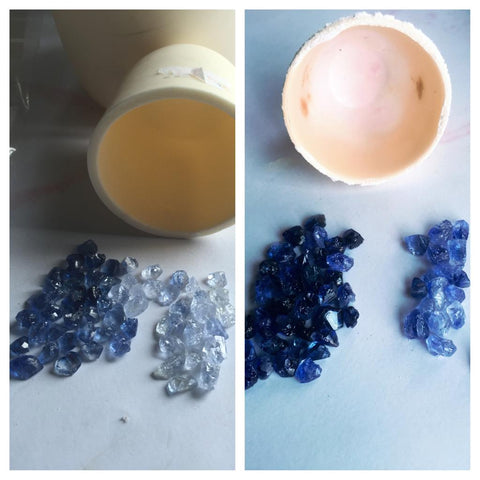
Before and after treatment on Sapphires - Photo Credits: Premacut Ltd
I also tried my hands at ruby diffusion but that was a very different ball game as chromium diffusion is a bit more of a challenge given the size of its molecules. Take into account that it is a very slow and repetitive process as you first need to coat the sapphires with chromium and then heat it up several times until the layers grow thick enough. Another challenge, was to train the team to polish the gems as the coloured part of the gem was rather thin and it was therefore quite simple to end up with a colourless sapphire again.
It is also during that time period that I met the Douros brothers whom were known for having one of the best fluxes in the market and we achieved an Overgrowth on the corundum. More information about this particular process can be found on the GIA website.
Last but not least, I also got involved in the creation of an experimental laboratory aimed at creating emeralds treatments. There, I was exposed to a series of treatments for beryls (emerald gem group) such as resins, oils and synthetic treatments which gave us excellent results. It is also at that time that I was first exposed to the now famous synthetic resin: Opticon which I always favoured as a more stable treatment than cedar oil was at the time at least. (More information on the topic of emerald treatment can be found here).
It is only then, in 2003, that we started the precision cutting. It’s probably not a bad idea to define what is precision cutting in this case as it differs substantially from what one sees in centre stones nowadays. We were cutting stones for the Swiss watch industry which required NASA levels of precision on stones that are 0.5 millimetres or so, with a tolerance of 0.02mm, which are then checked with a magnification device that projects the stone live on the wall.

Some of the rough for melee sized gems Karim used to work on for the watch industry - Photo Credits: Premacut Ltd
At that point we have a stone on the wall that makes roughly 1 meter of diameter and we make sure that the gem is absolutely flawless. Imagine for a second the quality of work and the precision it requires…
One of the thing that I personally find interesting is that nobody ever talks about what makes a real watch quality calibrated gem. It is not the quality of the cutter perse, as it is made on indexed machines and the cutter really does not need to be a fuse at that point. What really makes the difference is the quality of the polish that this quality requires which can only be achieved by real artists. A fun fact for you if you wish, when some of my clients requested that we worked on amethyst of that quality they got really surprised at the price these stones ended up achieving albeit the relatively low cost of the raw material. The reason was simple, the time required for the polish of these gems was roughly twice that of the sapphires….
After years of dealing with the tiny and very tiny I ceased the opportunity of playing with rough rubies and, thanks to my Thai language skills and knowledge of the local culture I was blessed with an encounter. I met with one of the most famous Thai burner (term used in reference to the heat treatment of gems in the trade) that would soon become my mentor and a prized friend!
I eventually ended up buying my own oven and started experimenting with all kind of heat treatments on rubies, sapphire, tourmalines, spinels and more. That said, we mostly do rubies for our selves and others famous as well as less famous companies. Without breaking the confidential agreements I have with some of my others clients, I can say that we are extensively working, recently, on the world’s oldest rubies: the Greenland Rubies which turn out to be a very interesting and challenging material to work with given its constitution. We are very proud of the results we have achieved with our Greenlandic partners and their gems.

Karim happily baking some of his prized possessions - Photo Credits: Premacut Ltd
AsiaLounges: Speaking about heat treatments and treatments in general, can you tell us why do people treat gems?
Karim Guerchouche: First thing first, as I just mentioned, I specialise in ruby treatments and different gems may have different reasons to be treated.
Whether it is to alter or increase the colour, whether it is to improve the clarity… gems are treated for a variety of reasons that may not be possible on all gems.
Take rubies for example, we treat them in order to enhance the colour and to “heal” the fractures of the gems thus making them cleaner. In other words, we help increase the clarity through heat treatment making the gems more desirable.
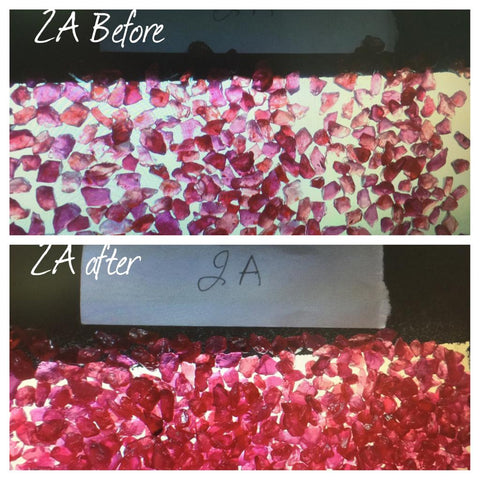
Ruby treatment before and after - Photo Credits: Premacut Ltd
It does not mean natural, untreated, gems may not be found in similar clarity, it just means that the bulk of what comes out of the ground requires us to give it a little push to make these gems more desirable for the end buyers and the industry in general.
That being said, heat treatment is not alchemy, we cannot turn a ruby into an emerald or vice versa. There are limitations to our art and the trade knows it. There are no surprises either as the vast majority of the business declares whether a gem has been treated or not and gemological labs are here to keep the few that would try to trick others into believing otherwise in check.

Example of Lotus Gemology report on a heat treated ruby from Karim's stock - Photo Credits: Premacut Ltd
AsiaLounges: Is it good or bad for the gems?
Karim Guerchouche: Of course it is good for the gems. Take into account that over 90% of the rubies in the market can be sold because they have been heat treated.
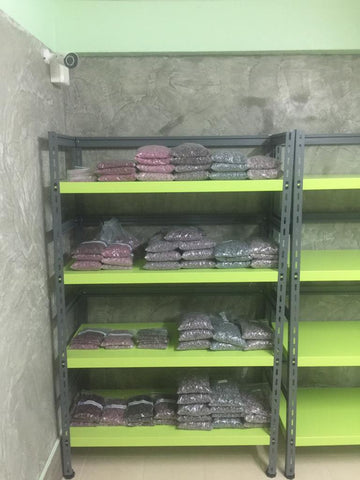
Some of Karim's rubies waiting for treatment - Photo Credits: Premacut Ltd
As I mentioned earlier, heat treatment allows to make the majority of ruby production desirable. Without this, the vast majority of ruby mining operations worldwide would not be able to operate at all.
It is specially true when looking at African rubies and more particularly Mozambican rubies which tend to come out of the ground fractured and purplish in colour. The stones need to be fracture healed with borax (a borosilicate material that lowers the melting point of the gem all the while protecting it from breakage) to make it desirable on the market. Added bonus of the borax treatment, it oxidises the stone during the treatment helping to remove the purplish side of the stone giving them a nicer red tone.
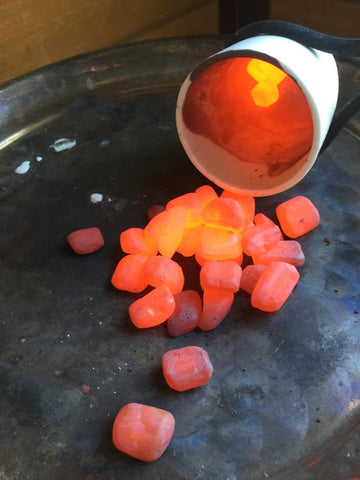
"Chaud mes rubies chaud!" (Hot my rubies Hot!) Is what Karim would humoristically say as he takes these red hot rubies off of the oven reminiscing of what chestnut bakers would say in winter in the streets of Paris - Photo Credits: Premacut Ltd
Heat treatment is neither new nor taboo. The trade has been treating gems for centuries if not millennia. It ensures the survivability of a vast portion of the industry if not its entirety. As a matter of fact, I have been working with the GIA, SSEF, and particularly with Vincent Pardieu, to show them how treatments are done. To give you an idea about the importance of said collaboration between burners and labs, because we tend to receive the materials coming from new found mines earlier than anyone else, it is not rare that we would then share some of these findings with the labs so that they too may study these gem deposits. It truly is an ecosystem.
Besides the money aspect of the treatment. These treatments also protect the stones themselves in some cases. If we go back to my days as a precision cutter for the watch industry for example, diamond cuts rubies that have not been heat treated have a higher chance to chip.
AsiaLounges: What is the impact on the value of the stone and can it be done on all types of stones? If not, why?
Karim Guerchouche: As a rule of thumb, a heat treated stone will almost systematically be considered less desirable, less expensive than a gem that is natural and non treated of the same quality.
That being said, a natural gem that has fractures, that doesn’t have a pure colour etc. will almost systematically be less desirable, less expensive than a perfect stone that has been treated.
So again, looking at the Mozambican material which makes for the vast majority of what’s available world wide right now in terms of rubies, it’d be very complicated to sell these gems without treating them for the most part.
Exception exist though and one must remain aware of it too.
As to whether all gems can be heat treated or not my answer is: No! It depends on a series of factors that would take far too long to develop here and now but know that other types treatments exists for these gems as well.
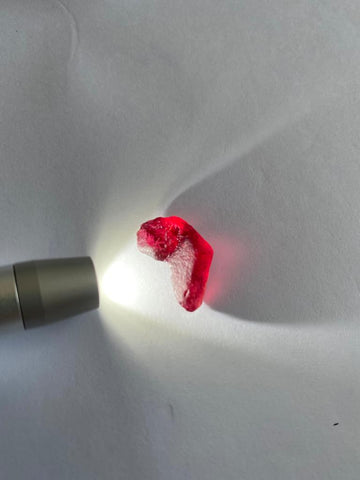
Speaking about Mozambican rubies, here is the now famous natural "Africa Ruby" from one of the latest Gemfields Auction - Photo Credits: Premacut Ltd
AsiaLounges: In the trade, we often hear about different type of heat treatments, usually referred to as old heat and new heat, but the end buyers seldom understand the difference and, truth be told, I am not convinced that that many sales person at retail level actually understand the difference either. Could you help us shed some light on these terms and what they really mean for the stone and the investments that the clients are making?
Karim Guerchouche: I know exactly what you are talking about! (laughs)
Generally speaking, “new heat’ refers to the use of lead glass to fill the fractures of the stones. These gems are also sometimes referred to as composite stones by gemological institutions such as Lotus or GIA while the “old heat” is characterised by the use of Borax. We talked about that earlier so that should help.
That being said, you don’t use the same type of raw material for each treatment either. In the case of “New Heat” or Glass Filled gems, you start with very low grade of almost colourless or pale and very damaged rubies. On the other hand, Borax is only here to improve a bit the stone, not to dramatically change its appearance thus requiring a significantly higher quality of rough to begin with.
It is important to highlight that some old timers in the trade consider old heat the treatment of gems without any fluxes such as borax. This treatment however requires the rough to be of even higher quality than in the other two cases. The rough would need to be clean of fractures or internal “imperfection” and only require colour improvement or to clarify the crystal a bit by removing what we call “Silk” in the trade.
About the investment part of the question. I would say that it depends on what was paid for to begin with and where was a piece purchased. Another point of importance is whether we are talking about a gemstone alone or a signed piece of jewellery. Hard question to answer with this few details.

AsiaLounges: You mentioned earlier that heat treatment is usually realised on rough gems, where does that rough come from? Are you a rough buyer yourself or are your clients bringing the rough that you treat and cut?
Karim Guerchouche: I do both actually. I buy and treat my own rough which is usually acquired through international tenders like the one from famous mining company: Gemfields Plc in Singapore as well as from other less sizeable but no less reputable merchants. I also work on order for mining companies as well as gems and jewellery merchants.
I’m really servicing the industry as a whole through a sorting and heat treatment center that we have set up in Chantaburie, Thailand.
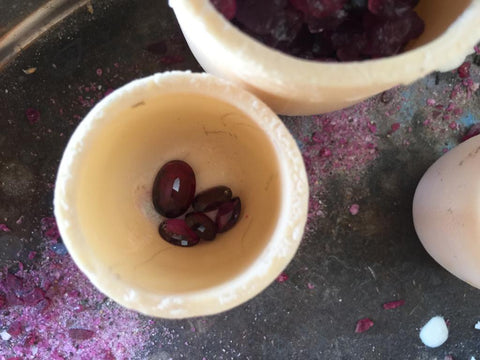
Readying the crucible - Photo Credits: Premacut Ltd
AsiaLounges: Speaking about rough and treatments, as you are most likely aware of, the talk of the year in the trade appears to be about fair trade and other ethical points. What is your take on the topic and you, as a rough buyer, how do you ensure to deliver ethical or responsibly sourced goods to your clients?
Karim Guerchouche: Ethics or ethical topics are indeed fashionable at the moment.
As far as I’m concerned, I’d love to see the people talking about ethics all the time define the concept and show me what they do to enforce said ethics. But I digress.
To me ethics or rather fair trade is all about making sure that every person at every step of the trade is getting their fair share of the profit generated by the goods created.

Speaking about ethical mining, here's Karim Guerchouche visiting the Greenland ruby mine - Photo Credits: Premacut Ltd
So in the case of our industry that means making sure that the value chain from miners to end customers are getting what they want at a fair price. Miners paid fairly are less likely to take risks to generate extra income and buyers getting goods at a fair price are less likely to end up attracting fraudsters.
As a final take on that particular question, if all the players in the trade become trading giants or, as they are often to as, financial vehicles, the dream that our trade is would die. There would no longer be space for small miners, no more space for new comers, no more space for artisans. Only would remain the giants and that would likely sign the death warrant of our lovely community and industry as a whole.
AsiaLounges: As we make this interview, the COVID19 crisis is unfolding and, since China is one of, if not the, biggest ruby buyers worldwide, how does this situation impacts your business and how do you see it unfold? Will it, according to you, have lasting effects in the trade? If yes which, if not, why?
Karim Guerchouche: China is by far the biggest market for rubies as of today so COVID 19 means us taking a big hit as an industry as the main market slumbers.
That being said, this virus is crippling us all, it is not limited by regions or races and affects us all wherever we may be. All matters of trades and people are being struck by the virus regardless of age, income, race or religion. It’s undiscriminating nature may be, paradoxically, its one and only redeeming feature. Instead of further dividing the world population as we have been until now, this virus may end up helping to warm us to one another and heal the divides in the process much like heat treatment does with rubies. I wish it’d turn into the flux that’ll heal our ruby like human race in the long term.
But enough with the philosophy, the gem trade, much like any luxury industry is basically the first industry to be hit in case of crisis as well as being the one that out performs all the others when it goes well simply because we are often considered to be only serving human hubris. So yes, a crisis like this one will necessarily generate massive issues for us on the short term.
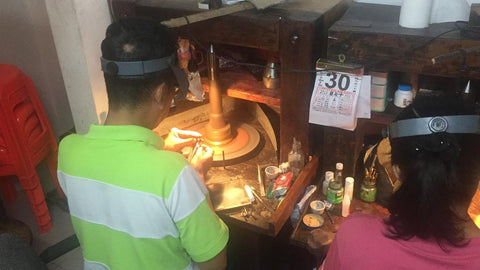
In the front line of people being touched by the industry crisis are cutters and miners in general which are traditionally vulnerable, low wages, jobs - Photo Credits: Premacut ltd
Add up to that the economical crisis that has been looming over for the last 2-3 years and you have a particularly unstable situation that’s likely to create that much more issues for us as an industry. This doesn’t mean that it does not present its very own lot of opportunities though. We have seen recently how the Auction houses are registering record breaking online sales, the western super luxury markets appear to be re-emerging at long last too. All these are opportunities that we, as an industry need to cease while addressing the various problems that the crisis has highlighted and magnified.
AsiaLounges: You opened a gem business school called IGT some two years ago. Can you tell us more about what it stand for and how is it different from gemmological schools such as GIA or AIGS for example?
Karim Guerchouche: First, let me define what IGT stands for for your audience. I.G.T. means Institute of Gem Trading and our mission statement is to help filling the gap between what’s missing from the traditional gemmological education and what is actually required from a gem trader.
The majority of big traders started in the trade without a formal gemological education. They all send their progeny to gem schools to have what they themselves may not have the opportunity to learn: the science behind the art. This allows them to acquire a firm understanding of both the trading part and the science behind, to be well rounded professionals.
Conversely, a lot of new players, enter the trade with an arsenal of gemmological degrees that rival in number of letters with the very alphabet yet understand near to nothing to what the gem trade is about, how to read rough or how to cut / recut a stone, how are prices structured etc.
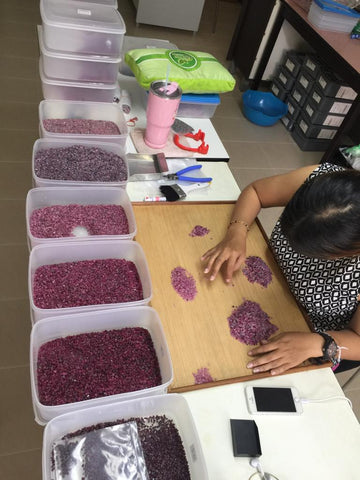
Learning the difference in qualities of rough and sorting it is one of the many missions of IGT - Photo Credit: Premacut Ltd
This is where IGT comes to play! We are the bridge between formal education and the actual business, the actual gem trade. We strive to provide new comers with the understanding of the trade that is traditionally imparted by the elder family members of gem dealing families.
We hope to be able to give a boost to those new entrants in the trade so that they may strive faster and, with them, help the rest of the trade strive by having an influx of new blood in a trade that is defined by traditions rather than modernity. Hopefully this will help bring in new ideas too.
AsiaLounges: We are drawing close to the end of this interview and we have a bit of a tradition now in A Gem Dealer’s Journal. We’d like to ask you to provide three advice to people that would like to follow in your footsteps as well as three books that you believe should be in every gem geek’s library.
Karim Guerchouche:
- First, come to IGT, that’s why we set it up in the first place. So that you may learn from our experience.
- Try to work with passionate people. They may not always be right but they will get you in the right state of mind to work. You’ll keep the dream alive and that’s capital to the survival in this trade.
- Keep dreaming with opened eyes/ The dream is paramount but you need to have a firm grasp of reality. Loosing one or the other will bankrupt you as surely than any other vices. (laugh)
Books:
-Gemstone Enhancement by Kurt Nassau
-Ruby and Sapphire by Richard W.Hughes
- Secrets of Gem Trade by Richard W.Wise
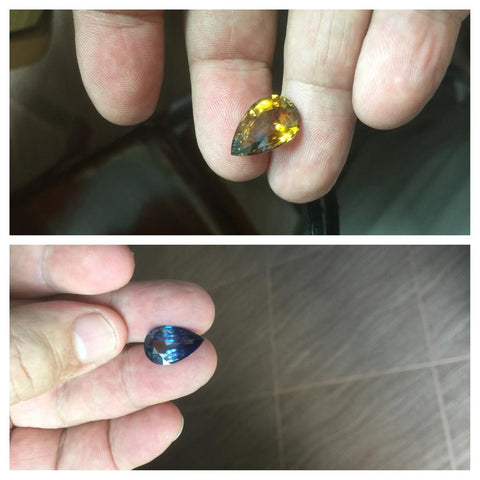
Heat treatment is not Alchemy but it's still the closest thing to it - Photo Credits: Premacut Ltd
AsiaLounges: Thank you very much Karim for being with us today, I am convinced that our readers, the Loungers, have enjoyed this interview as much as we did enjoy writing these lines.
As for us, we will meet you again soon in the Lounges with more exciting content! If you have enjoyed this interview please let us know by liking, commenting and sharing our work with your family and friends on your favourite social media platform. Don't forget that you can also support A Gem Dealer's Journal through our Patreon's Page. It helps us a lot and takes but a second!
Should you have any questions or topic that you’d like us to research for a future interviews and articles, feel free to let us know by contacting us at simon@asialounges.com, it is always a pleasure to dig further into the world of gems and gemmology!
For all the rest, feel free to take a look at our gem and jewellery collection as well as to contact us should you be interested in getting one of our famed bespoke pieces of AsiaLounges Jewellery.
See you again in the Lounges,
